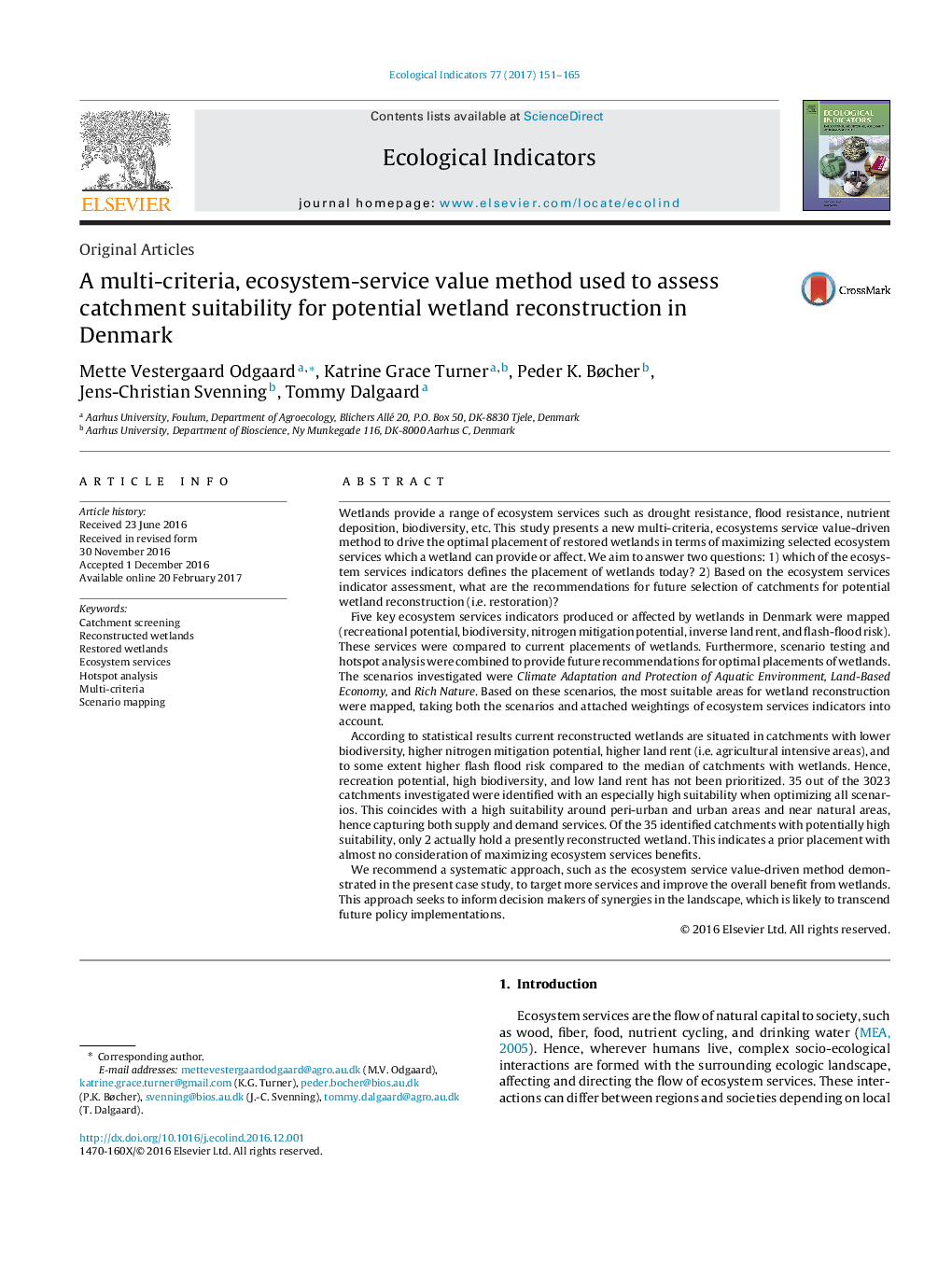| Article ID | Journal | Published Year | Pages | File Type |
|---|---|---|---|---|
| 5741719 | Ecological Indicators | 2017 | 15 Pages |
Wetlands provide a range of ecosystem services such as drought resistance, flood resistance, nutrient deposition, biodiversity, etc. This study presents a new multi-criteria, ecosystems service value-driven method to drive the optimal placement of restored wetlands in terms of maximizing selected ecosystem services which a wetland can provide or affect. We aim to answer two questions: 1) which of the ecosystem services indicators defines the placement of wetlands today? 2) Based on the ecosystem services indicator assessment, what are the recommendations for future selection of catchments for potential wetland reconstruction (i.e. restoration)?Five key ecosystem services indicators produced or affected by wetlands in Denmark were mapped (recreational potential, biodiversity, nitrogen mitigation potential, inverse land rent, and flash-flood risk). These services were compared to current placements of wetlands. Furthermore, scenario testing and hotspot analysis were combined to provide future recommendations for optimal placements of wetlands. The scenarios investigated were Climate Adaptation and Protection of Aquatic Environment, Land-Based Economy, and Rich Nature. Based on these scenarios, the most suitable areas for wetland reconstruction were mapped, taking both the scenarios and attached weightings of ecosystem services indicators into account.According to statistical results current reconstructed wetlands are situated in catchments with lower biodiversity, higher nitrogen mitigation potential, higher land rent (i.e. agricultural intensive areas), and to some extent higher flash flood risk compared to the median of catchments with wetlands. Hence, recreation potential, high biodiversity, and low land rent has not been prioritized. 35 out of the 3023 catchments investigated were identified with an especially high suitability when optimizing all scenarios. This coincides with a high suitability around peri-urban and urban areas and near natural areas, hence capturing both supply and demand services. Of the 35 identified catchments with potentially high suitability, only 2 actually hold a presently reconstructed wetland. This indicates a prior placement with almost no consideration of maximizing ecosystem services benefits.We recommend a systematic approach, such as the ecosystem service value-driven method demonstrated in the present case study, to target more services and improve the overall benefit from wetlands. This approach seeks to inform decision makers of synergies in the landscape, which is likely to transcend future policy implementations.
